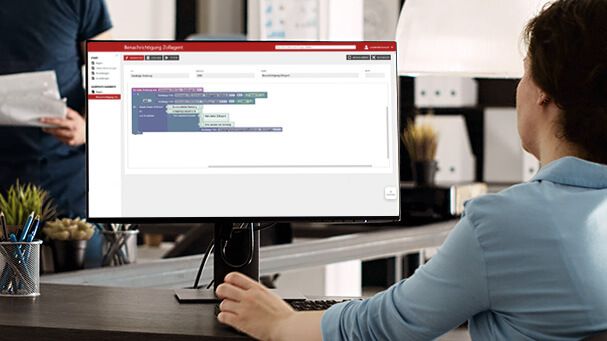If you want to select the right hardware for a logistics process as a logistics service provider, you have to know the tasks involved. This includes understanding the project environment of the services with its framework conditions: How long does the operation run? What are the temperature and humidity conditions? How is the equipment typically used? The selection of the appropriate technology depends on these factors. In addition, there is the network technology, mobility, availability and, last but not least, the price-performance ratio. Aspects where companies benefit from the advantages of using it for rent or as Hardware as a Service (HaaS).
The right equipment for logistics results not only from the general conditions but also from the expectations and wishes of the users. How do they want to work with the hardware? Only if their needs are met will they use the components efficiently and supply logistics chains with information. For example, mobile data terminals (MDT) must fit the respective tasks in terms of size, weight and operability: In a truck, the devices should not be too large and heavy. Inside the transshipment facility, on the other hand, loaders want all hardware to be operable with gloves for the winter. And in deep-freeze warehouses, depending on the temperature range, heated displays are required so that the liquid crystals of the equipment remain usable. In addition, it depends on the shift concept for how long the battery power of the devices must be sufficient. Printers in logistics facilities should generally use thermal transfer paper for summer climates. Because then neither inks nor toner can be damaged by too high temperatures. Forklift terminals, on the other hand, must be able to be mounted in such a way that the drivers do not get stuck anywhere when manoeuvring. Hardware as a Service offers companies a solution for precisely adapting the equipment to their tasks in intralogistics or handling without requiring too much investment.
In cargo handling and logistics warehouses, network technology is decisive for the efficiency of the equipment in the logistics process. Only if all components have sufficient bandwidth and radio range available everywhere can the data be transmitted directly and a new status information be transferred into the logistics process Therefore, the network infrastructure with WLAN access points in particular should always be up to date. In addition, it is advisable, especially for trouble-free work in logistics facilities and handling terminals with a high density of devices, to rely on manufacturers whose technology is already compatible with the new Wifi 6 data radio standard. Furthermore, the facilities need a central device management system that monitors authorisation, roaming and device status. This also allows pick-by-voice systems to be used effectively for order picking, which produce larger amounts of data through voice transmission and are therefore dependent on reliable connections. Logisticians can use all of this equipment on a temporary rental basis and thus regularly renew the technology. This way, they also conserve their liquidity.
One of the most important requirements for terminals in logistics is their availability. After all, value chains and the speed of processes do not tolerate failures. To allow such secure operations, the devices should be centrally administrated with mobile device management software. These applications
- regulate configuration and implementation
- monitor charging and function
- take inventory of the devices
- commission new units
- install system updates and software
- inform at an early stage when action is required.
In this way, they ensure continuous operational readiness and prevent interruptions in the supply chain. In the process, a full-service provider can offer the hardware and its maintenance for rent at particularly profitable conditions. Similar to vehicle leasing, users save the acquisition costs of the products and can rent the components instead. This allows them to take into account the dynamics and flexibility of new orders. They benefit from continuous total costs instead of punctual depreciation and procurement cycles. With this outsourcing, providers replace defective hardware immediately and thus prevent data gaps and errors from occurring in the logistical processes.



